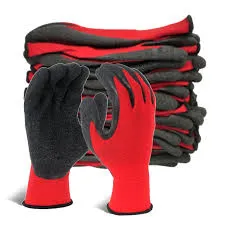ansi class 3 safety clothing product
Understanding ANSI Class 3 Safety Clothing Importance and Applications
In various industries, worker safety is paramount, and one critical aspect of ensuring safety in hazardous environments is the proper use of personal protective equipment (PPE). Among the plethora of safety gear available today, ANSI Class 3 safety clothing plays a pivotal role, particularly for individuals working in high-risk areas where visibility is crucial. This article explores what ANSI Class 3 safety clothing is, its significance, and its applications in different sectors.
What is ANSI Class 3 Safety Clothing?
ANSI (American National Standards Institute) Class 3 safety clothing is designed to provide maximum visibility for workers in environments where they are at risk of being struck by vehicles or equipment. According to the ANSI/ISEA 107 standard, Class 3 garments are characterized by their high visibility and reflectivity. These garments typically feature a combination of bright colors, such as fluorescent yellow, orange, or pink, coupled with reflective materials that enhance visibility in both day and night conditions.
For clothing to meet Class 3 requirements, it must include a minimum amount of fluorescent background material along with reflectivity. Specifically, a Class 3 garment requires at least 1,280 square inches of background material and a minimum of 310 square inches of reflective material. This ensures that workers are easily distinguishable from their surroundings, which is particularly important in low-light conditions or high-traffic areas.
Importance of ANSI Class 3 Safety Clothing
The primary purpose of ANSI Class 3 safety clothing is to reduce accidents and injuries in the workplace. In sectors such as construction, roadwork, emergency response, and transportation, workers often find themselves in situations where visibility is compromised. The high visibility provided by Class 3 garments allows drivers and equipment operators to see individuals from greater distances, thereby minimizing the risk of collisions.
Furthermore, beyond the immediate physical protection offered, the psychological impact of wearing such visible clothing cannot be overlooked. Workers wearing Class 3 garments often feel more secure in their environments, knowing they are protected by a layer of precaution that enhances visibility and safety. This sense of security can lead to increased productivity, as workers can focus on their tasks without the constant concern of being overlooked by vehicular traffic.
Applications of ANSI Class 3 Safety Clothing
ansi class 3 safety clothing product

The applications for ANSI Class 3 safety clothing are diverse and span across various industries. Some of the most notable fields include
1. Construction Construction sites are bustling environments where workers are often in close proximity to moving machinery and vehicles. Class 3 garments help ensure that these workers remain visible, reducing the likelihood of accidents.
2. Road Maintenance Workers involved in road repairs or maintenance are especially vulnerable. The bright colors and reflective materials of Class 3 clothing alert drivers to their presence, which is critical in preventing accidents.
3. Emergency Services First responders often work in chaotic situations where visibility can be compromised. Class 3 safety clothing allows them to be easily identified and protected, even in low-light or busy environments.
4. Utility Work Utility workers frequently operate near traffic and in unpredictable conditions. Wearing ANSI Class 3 attire provides an added layer of safety in ensuring they are seen while working.
5. Event Management Security personnel and staff at large events often wear Class 3 clothing to ensure they can be quickly identified by attendees and staff alike, enhancing safety and communication.
Conclusion
In conclusion, ANSI Class 3 safety clothing is an essential element of workplace safety, particularly in environments characterized by high traffic and low visibility. Its bright colors and reflective materials significantly enhance the visibility of workers, thereby reducing the risk of accidents and promoting a safer working environment. As industries continue to evolve and safety regulations advance, the importance of adhering to guidelines like those set by ANSI will remain crucial in safeguarding the well-being of workers across various sectors. Whether on a construction site, a busy roadway, or at a public event, the role of Class 3 safety clothing cannot be overstated in its contribution to preventing workplace injuries and fatalities.
-
Top AI Safety Clothing with GPT-4 Turbo | Smart Protection
NewsJul.31,2025
-
Face Shield Safety Helmet with GPT-4 Turbo AI Safety
NewsJul.31,2025
-
CE Working Clothing for Construction & Welding Safety
NewsJul.30,2025
-
Premium Safety Helmet with Visor for Construction & Industrial Use
NewsJul.29,2025
-
High-Quality CE Working Clothing for Safety and Construction
NewsJul.29,2025
-
Premium Safety Helmet Hat with Ear Defenders, Brim & Soft Design
NewsJul.29,2025
